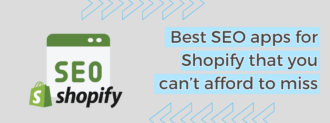In the highly competitive world of e-commerce, optimizing your ecommerce is essential to increase conversions, improve user experience and maximize sales.
Table of contents
Improve your website loading speed
The loading speed of a website is one of the most critical factors affecting the user experience and performance of an ecommerce site. A slow website can frustrate visitors and increase the abandonment rate, which negatively affects conversions.
Strategies to improve loading speed
Image optimization
Make sure all images are compressed and optimized for the web. Use appropriate formats such as JPEG for photos and PNG for graphics with transparency.
Use of CDN
Implement a content delivery network (CDN) to deliver your website content from servers located close to your users, reducing load times.
Code Minification
Minify CSS, JavaScript and HTML files to reduce file size and improve load times.
Caching
Configure caching so that static elements of your site are stored in the user’s browser, reducing the need to repeatedly load resources.
Optimize the checkout process
The checkout process is one of the most critical steps in the customer journey. A complicated or confusing checkout process can lead to lost sales, even if customers have added products to their cart.
Strategies to optimize the checkout process
Simplify the process
Reduce the number of steps required to complete a purchase. A single-page checkout process can be very effective.
Multiple payment options
Offer multiple payment options to suit your customers’ preferences, including credit cards, PayPal, Apple Pay, and more.
Autocomplete and save information
Implements autocomplete features and the option to save payment information for future purchases, making the process easier for repeat customers.
Cost transparency
Displays all costs, including taxes and shipping, up front to avoid unpleasant surprises at the end of the checkout process.
Personalize the user experience
Personalization can significantly improve the user experience, increasing engagement and conversions. Users value a shopping experience tailored to their preferences and behaviors.
Strategies to personalize the user experience
Product recommendations
Use recommendation algorithms to suggest products based on users’ browsing and purchase history.
Personalized content
Displays relevant content based on geographic location, purchase history and user preferences.
Personalized email campaigns
Send personalized emails with offers and recommendations based on customer behavior and preferences.
User segmentation
Segment your customers into specific groups to offer promotions and content that are highly relevant to each segment.
Optimize for mobile
With the increasing use of mobile devices for online shopping, it is crucial that your ecommerce offers a seamless mobile experience. A website that is not optimized for mobile can drive away a large number of potential customers.
Strategies to optimize for mobile
Responsive design
Make sure your website is fully responsive, adapting to different screen sizes and devices.
Ease of navigation
Simplify navigation on mobile devices with clear and accessible menus, large buttons and a clean design.
Image and resource optimization
Use optimized images and minimize the use of heavy resources to ensure fast loading on mobile devices.
Usability testing
Perform usability testing on various mobile devices to identify and correct any issues that affect the user experience.
Conclusion
Optimizing an ecommerce requires a combination of tactics that improve load speed, simplify the checkout process, personalize the user experience, and ensure a smooth mobile experience.
Implementing these four tactics can help you improve customer satisfaction, increase conversions and ultimately drive sales for your online store.
At Innovadeluxe, we are committed to helping you maximize your ecommerce potential through effective and customized optimization strategies.
Related Posts









Deja un comentario